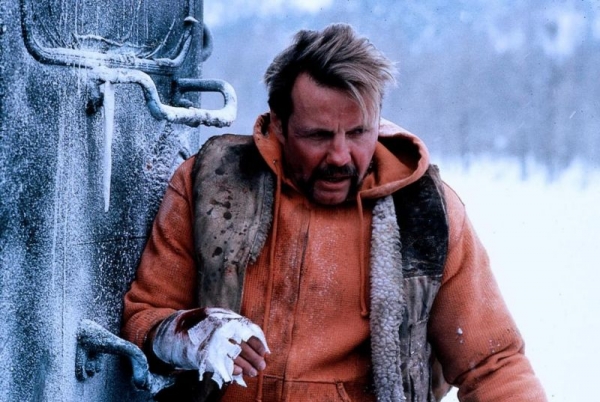
Ah, the 1980’s, an era of rapidly increasing budgets and musclebound screen heroes like Schwarzenegger, Van Damme, Norris, Lundgren; a time when Jason Voorhees and John Rambo simultaneously captured the world’s collective imagination.
It was also the decade of Cannon Films, a production house that cranked out low-to-medium budget action films with astonishing regularity. Led by Israeli cousins Menahem Golan and Yoram Globus, Cannon was a force to be reckoned with and no discussion of the genre during this period would be complete without them (three of the entries on this list come from Cannon). Below are ten hugely entertaining 80’s action films that haven’t received the attention they deserve.
1. Contraband (1980)
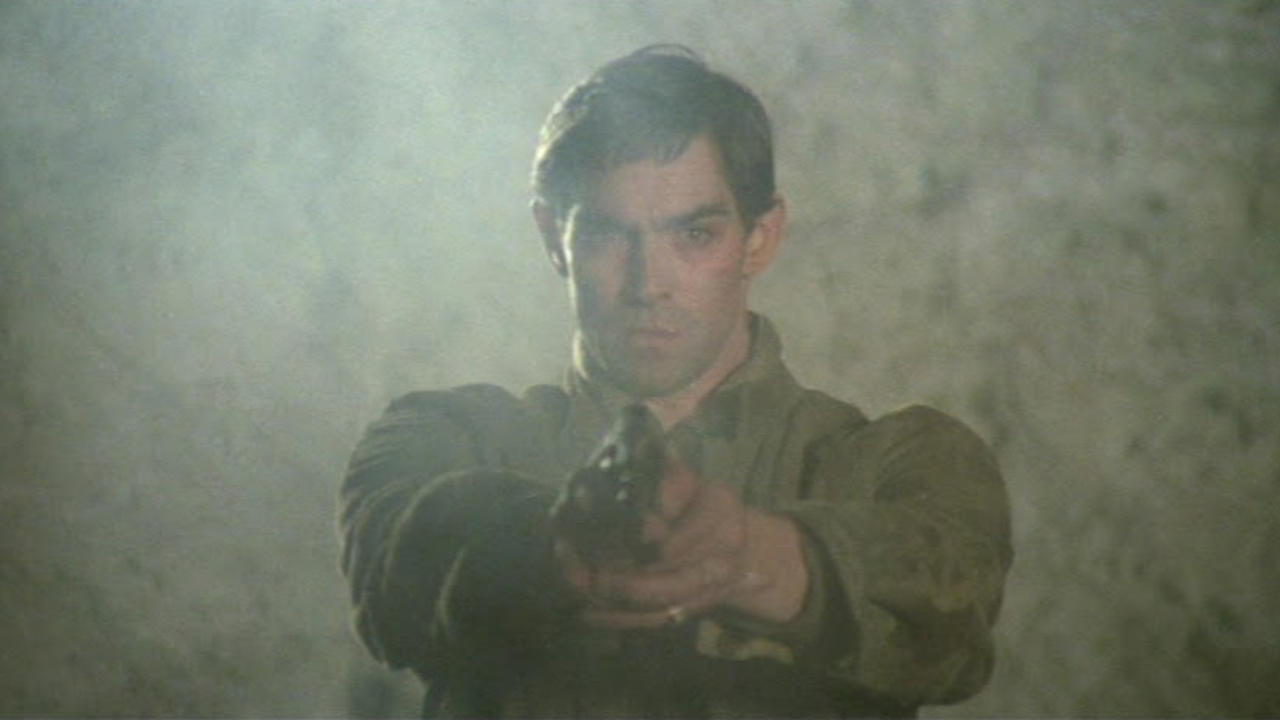
When Lucio Fulci’s film Zombie was released in 1979, it earned the highest profits he’d ever seen and basically dictated the course of the man’s career until his death in 1996. After decades of hopping between genres with incredible ease, gory horror flicks became Fulci’s stock-in-trade. He did, however, manage to sneak in one action movie before diving head-first into the world of nightmares. Easily one of the most violent gangster pictures of all time,
Lucio Fulci’s Contraband deals with smugglers in Italy. The main character, Luca, and his brother, Michele, are mobsters who use speedboats to smuggle stolen goods. After the brothers lose a boatload of hijacked cigarettes, angry bosses decide to have Michele killed; this sends Luca off on a brutal warpath which takes us through the Italian crime underworld.
Shot on the sloping streets of Naples, Contraband is an action-packed mob movie as only Fulci could give us, chock full of nihilism and exaggerated carnage. We’re talking true savagery here, expertly realized by FX wizard Gino DeRossi: death by machine gun, blowtorch, meathook, drowning in a sulfur pit.
Sergio Salvati lenses all the havoc in a forceful, unflinching manner, his camerawork heavy on zooms and diffusion (as was Fulci’s preference, especially during the 80’s). Sensationalism aside, the story is fully engaging and Fabio Testi puts in a commendable performance as Luca. Even in the dubbed American version, Testi’s capable acting shines through.
The gangsters in Contraband are given some depth, aren’t mere cardboard cutouts. Fulci even tosses in a sly commentary on the culture of violence by having his mobsters constantly watch and reference old Westerns (one is reminded of Jim Jarmusch’s film Ghost Dog, where the old mafia guys are forever gazing at cartoons).
As always with Italian films, the music is a character in itself; Fulci’s regular composer, Fabio Frizzi, lent his talents to Contraband and the funky score works wonders. Easily one of the strongest efforts from a master filmmaker whose entire filmography cries out for reappraisal.
2. Raw Force (1982)
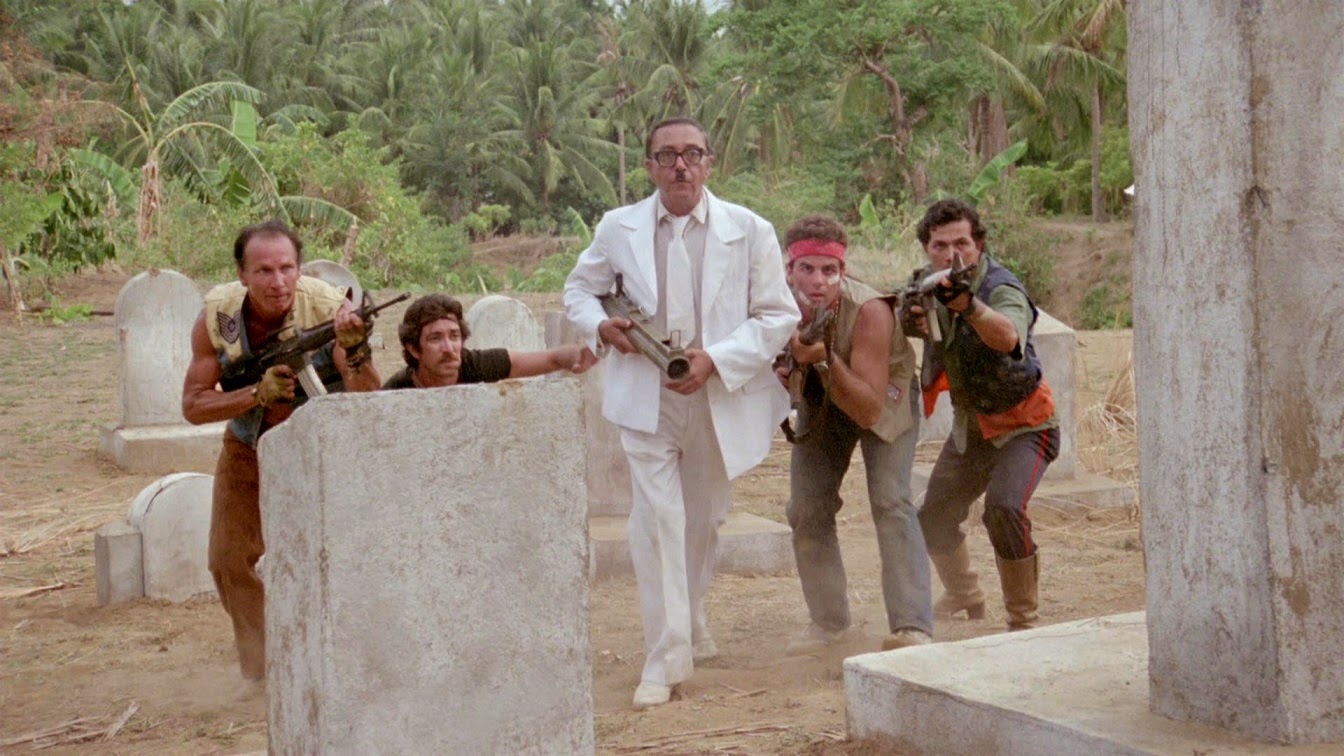
Raw Force is a Filipino-American exploitation flick, the sort of churned-out effort that was released straight to dingy movie houses on 42nd Street and never heard from again. Or, so we thought. The plot involves three Americans, members of the Burbank Karate Club, on their way to an island off the coast of China.
Unbeknownst to them, Warrior Island is home to a Hitler-look alike (played by a Filipino actor sporting a ludicrous German accent) who operates a female slavery ring. The island also houses cannibal monks, machete-wielding zombies, piranhas, necromancers and, of course, lots of naked girls. Raw Force (a.k.a. Kung Fu Zombies) is junk-food cinema, offering little in the way of substance or technical skill.
The acting is wooden, the cinematography artless, the end product feels rushed and sloppy; instead of character development, we’re given a man getting kicked in the head through the closed drivers-side window of a moving car.
A breathless barrage of T’n’A, flying fists, cheap gore, and beefed-up silliness, Raw Force has a serious case of attention-deficit-disorder, feeling like a movie written by a 15-year-old hopped up on Pixy Stix. Kung-fu and zombies were big box-office draws at the time and Raw Force attempts to mash these genres together with a bare minimum of style or grace.
This results in a ridiculously entertaining experience, provided the viewer can dial their intellect to ‘absolute zero’ and embrace the sleaze. Exploitation regulars Vic Diaz and Cameron Mitchell make welcome appearances, lending the film proper grindhouse credentials.
Unlike the rest of the cast, Diaz actually gives an effective (albeit brief) performance as one of the aforementioned flesh-eating monks. Even Mitchell, one of the hardest-working thespians of the 70’s and 80’s, appears lost and confused. These flaws don’t detract from the overall experience, instead perfectly meshing with the movie’s whacked-out sensibilities.
Not meant to be taken the least bit seriously, Raw Force is manna from B-movie heaven. If you like kung-fu violence, gratuitous nudity, and action, Raw Force amply provides all three. It was recently given Blu-ray treatment from Vinegar Syndrome, and looks splendid. This should be on the shelf of every discerning trash-film fan.
3. Vice Squad (1982)
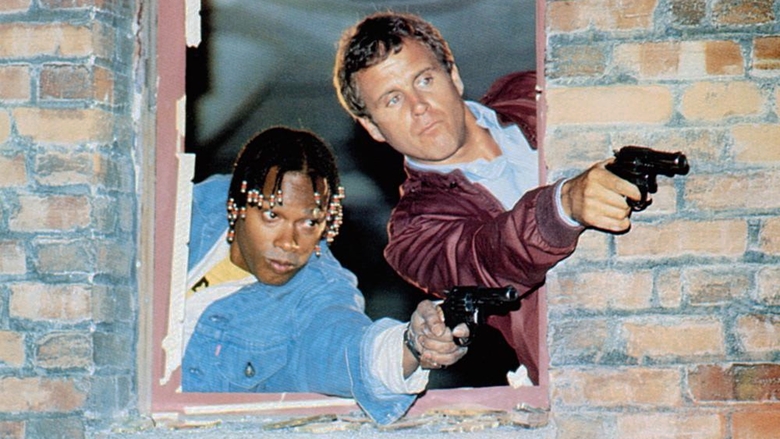
At first glance Vice Squad appears to be a run-of-the-mill piece of schlock, yet nothing could be further from the truth. This is unusually thoughtful pulp, exploitation with a conscience and an admirable adherence to realism.
Taking place over the course of one balmy summer evening in Los Angeles, Vice Squad tells the story of Princess (Season Hubley), a single mother and moonlighting prostitute who is used by a police detective (Gary Swanson) to lure in a monumentally sadistic pimp named Ramrod (Wings Hauser).
Director Gary Sherman had previously helmed two excellent horror pictures (Death Line, Dead and Buried), and with Vice Squad he makes all the right moves. Dialogue, especially, is used to great effect; the script is a thing of beauty.
There are countless memorable lines and exchanges, and the film is sprinkled with fascinating insights into the seamy world of prostitution: working relationships, legal troubles, appointments with bizarre fetishists. All of this drips with authenticity. John Alcott’s cinematography is tasteful, damn near elegant, almost entirely made up of moody night-time exteriors: Sherman utilizes a minimum of indoor locations, wisely choosing to remain on the streets for the bulk of his picture.
Every single performance, from top to bottom, is exceptional. Season Hubley (who stated that Vice Squad was the most emotionally demanding role she’d ever taken on) gives a powerhouse performance, and Gary Swanson matches her every step of the way as the driven law officer, but the picture belongs to Wings Hauser. Ramrod is as reprehensible as they come, a thuggish, misogynistic, murderous slime-ball, and Hauser goes all-out bringing this loathsome character to life. He’s magnetic, creating a truly menacing presence while never veering into parody or melodrama.
Vice Squad technically falls more into the ‘crime-thriller’ category, but contains enough fight scenes, gun battles, and car chases to warrant inclusion here; I should add that none of these moments are gratuitous, instead evolving naturally from the storyline. Sherman allows events to smoothly lead from one to another, not once asking his viewer to suspend disbelief. Joe Renzetti’s score works brilliantly, almost subversively, underscoring these real-life horrors with music that wouldn’t feel out of place in a slasher film.
Vice Squad is a masterful piece of work, possessing countless virtues that went largely ignored by audiences and critics at the time of its release; it remains a neglected classic to this day. Gary Sherman, much like Hauser, went on to do very little of value.
One could argue that the subsequent sub-par efforts of both the director and lead actor may have sullied this astonishing films reputation, and they wouldn’t necessarily be wrong. For what its worth, Martin Scorsese once opined that Vice Squad should have won the Best Picture Oscar in 1982.
4. Ninja III: The Domination (1984)
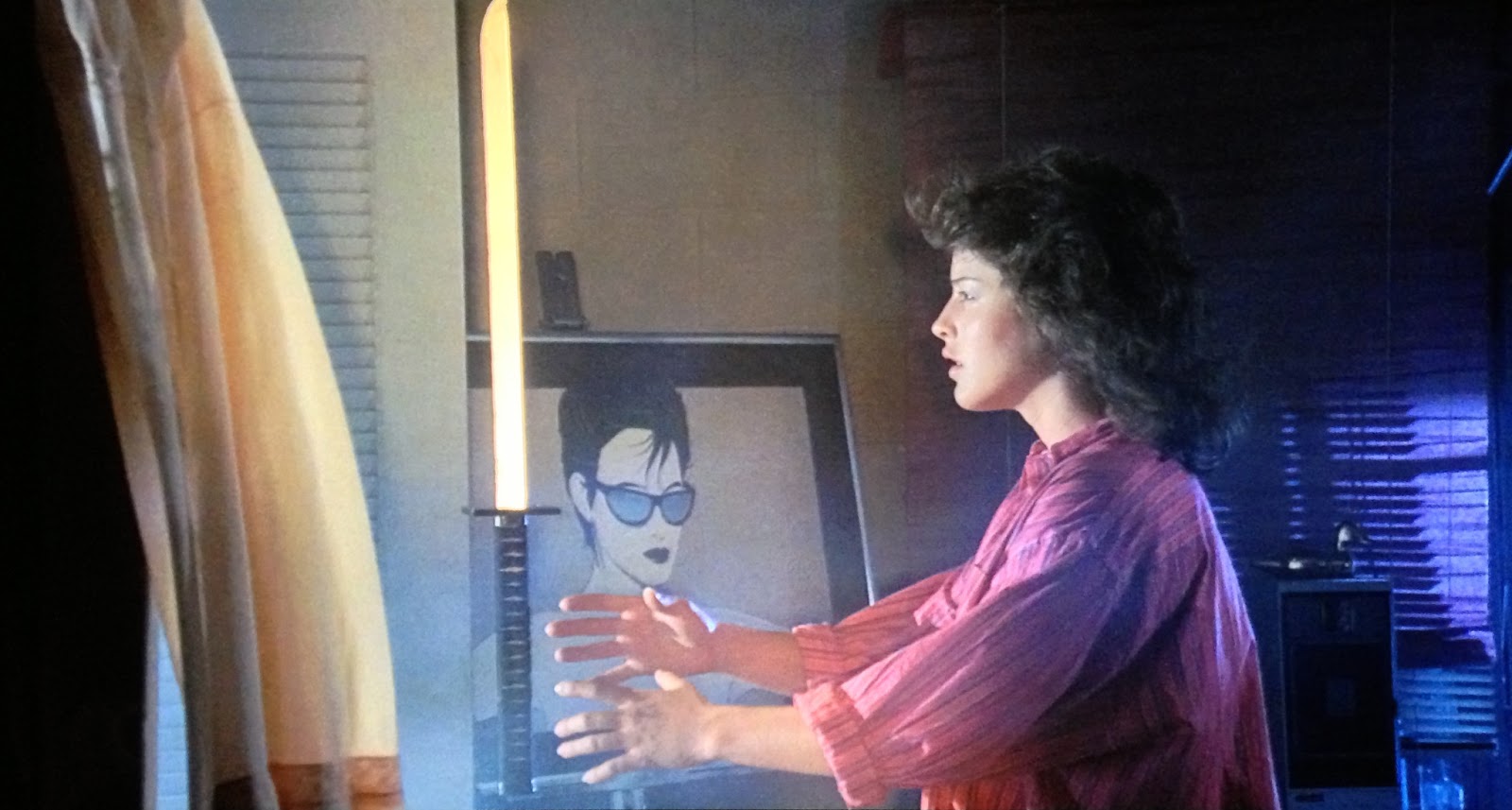
Ninja III: The Domination is one terminally weird movie. Just utterly bananas, a motion picture so detached from logic and reality that it almost seems to have created itself. It’s hard to imagine any human person writing this thing, let alone a vast group of them casting it, staging it, and discussing character details.
The film opens with a lone ninja storming onto the grounds of a golf course, in broad daylight, and killing everyone in sight. Naturally, he attracts the attention of police and a massive manhunt ensues. Within the first ten minutes of Ninja III, you’ll witness car chases, motorcycle stunts, a helicopter crash, death by blowgun, and the rapid-fire execution of about fifty people.
The murderous assassin is shot down by authorities and his spirit passes into the body of an attractive aerobics instructor(!); now possessed, our pretty young protagonist (Lucinda Dickey) sets forth to wipe out all those responsible for the evil ninja’s death. The only way to rid herself of this ghostly presence: combat with another ninja. Domination is the third (and final) entry in the Ninja series from Cannon Films.
The first two, Enter the Ninja and Revenge of the Ninja, are barely related to the third; having seen them is not a requirement when approaching Ninja III. While the other installments focused on an East-meets-West culture clash, this one decided to go supernatural and probably disoriented a lot of fans in the process. Dickey ain’t no Meryl Streep, but she looks spectacular and remains consistently watchable.
Director Sam Firstenberg, returning from Revenge of the Ninja, instills the proceedings with appropriate energy, never allowing boredom to set in. Yet another splendidly entertaining offering from Menahem Golam and Yoran Globus, the undisputed kings of low-brow 80’s action.
5. Death Wish 3 (1985)
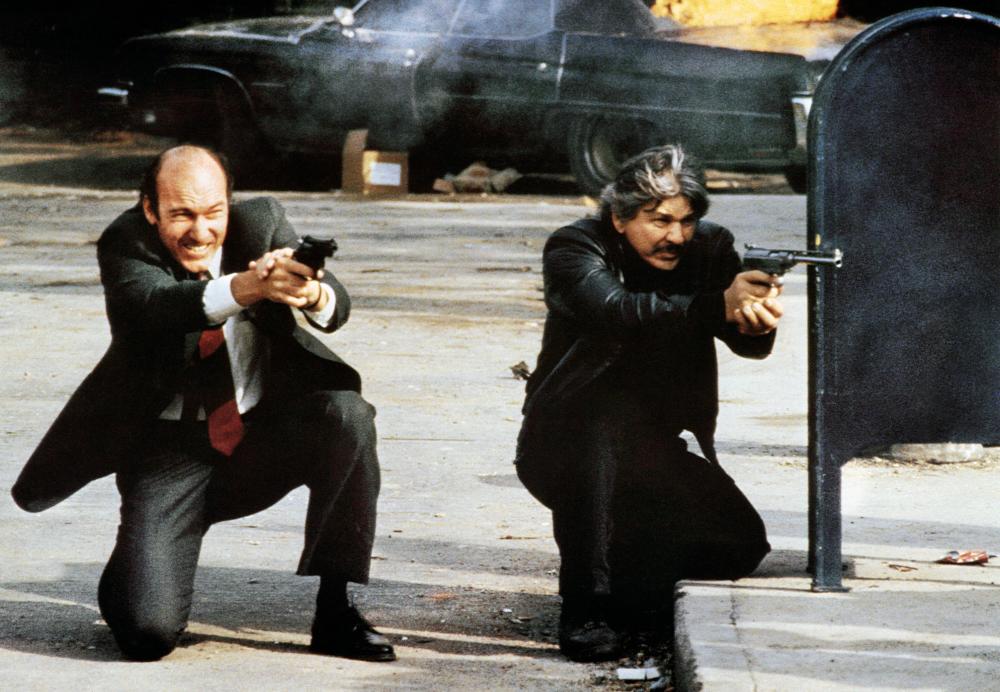
The worldwide success of Michael Winner’s Death Wish led to four sequels, all now widely regarded as dated products of their time. Winner returned for the second and third installments; J. Lee Thompson took the reigns for Part IV, then Allan Goldstein finished out the series with The Face of Death.
Star Charles Bronson remained on board for each entry, hair greying and interest visibly waning. He was uncharacteristically vocal about his distaste for the cartoonish style of Death Wish 3, which ended the fruitful collaborative relationship between Bronson and Winner (they’d done five films together at that point). He vowed to never work with the director again, and stayed true to his word.
The first two Death Wish pictures had a dour, bleak tone: Bronson’s Paul Kersey character hit the streets with a grim vengeance, serving up vigilante justice for any and all manner of street scum. In the initial film, his motivation was pointed and crystal clear. With Death Wish 2, it required some suspension of disbelief; the idea of his family being viciously attacked again, on the opposite coast, was tough to swallow (“boy, that Kersey clan sure has some bum luck!”).
When another sequel was green-lit, Winner realized that ‘gung-ho’ was the way to go, and Death Wish 3 soars straight over the top as few films ever have, before or since. It’s a vibrant, explosive live-action comic book that sees Kersey (back in New York after the events in Part 2) given a pass by law enforcement. In the interest of lowering crime rates, the local police chief has agreed to turn a blind eye to Kersey’s violent antics.
Free to wipe out hoodlums with impunity, Kersey earns the ire of a street gang that regularly terrorizes the elderly; their growing dispute leads to a climactic shootout that must be seen to be believed. Winner created a mini-apocalypse within the last twenty minutes of Death Wish 3, a mad smorgasbord of firepower (including rocket launchers and MG-42’s), flying bodies, and explosions that’s still impressive to this day.
In its last reel, Death Wish 3 literally goes insane. Michael Winner was a supremely underrated visual stylist, and this film is expertly shot and lit (something hardly anyone seems to mention). Every frame pops, sizzles with color and energy. The pacing never flags, and Winner’s inventive style of shooting, staging his scenes breathes life into even minor dialogue exchanges.
Bronson, 64 at the time of filming, is clearly going through the motions, his unhappiness with the material plainly evident. Miraculously, this enhances the film’s droll sense of humor.
Watching Chuck strut through each scene, halfheartedly dishing out vengeance like a sleepy executioner, is undeniably amusing, and one is left with the strong impression that Winner wanted it that way. It’s crass, mean-spirited, gratuitous, and knowingly stupid, but also one of the most entertaining movies you’ll ever come across, aging with an awkward grace.